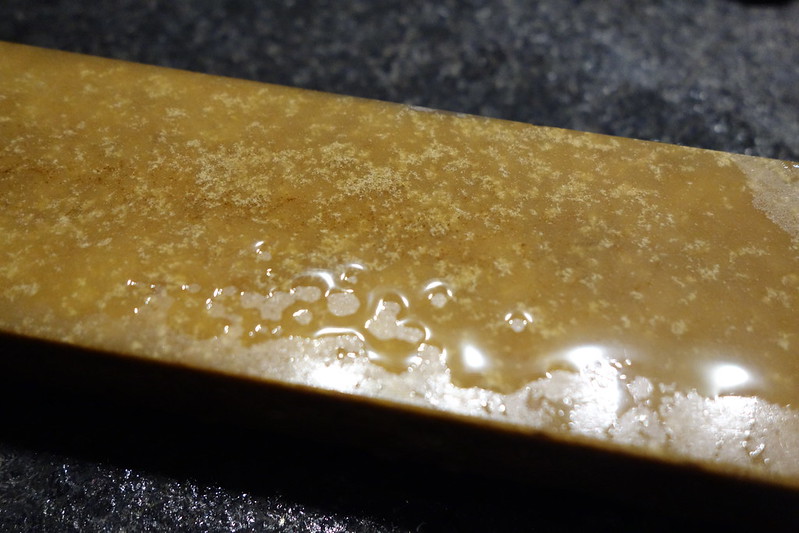Got another cheap stone that was pretty much unidentifiable - look what came out in the U/S Simple Green bath:



At first I was thinking another Washita but then saw that weird silt deposition ooze looking surface underneath. So Magog, Canadian oil stone? It makes a slightly different noise when tapped than the Washita - the Washita makes more of a ring, this stone is more of a dull thud.
I tried something interesting with this stone after reading about someone using water and slurry on their Ark. Splashed some water on and slurried with an Atoma 400. Son of a gun that cuts fast! Leaves a scratch pattern around the same as my Shapton 1k or 2k. Wonder why more people don't use them that way, seems like it would make an outstanding 1k or 2k natural bevel setter, and raised black swarf within a few strokes, so cut almost as fast as a synth. Tried it out with the Washita and it works well with that too.
At first I was thinking another Washita but then saw that weird silt deposition ooze looking surface underneath. So Magog, Canadian oil stone? It makes a slightly different noise when tapped than the Washita - the Washita makes more of a ring, this stone is more of a dull thud.
I tried something interesting with this stone after reading about someone using water and slurry on their Ark. Splashed some water on and slurried with an Atoma 400. Son of a gun that cuts fast! Leaves a scratch pattern around the same as my Shapton 1k or 2k. Wonder why more people don't use them that way, seems like it would make an outstanding 1k or 2k natural bevel setter, and raised black swarf within a few strokes, so cut almost as fast as a synth. Tried it out with the Washita and it works well with that too.



